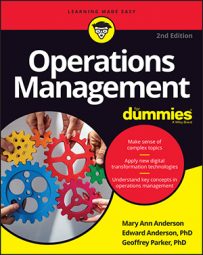How effective is your inventory management process? To find out how well operations management is dealing with inventory, you must be able to measure it. Here are some common inventory metrics:
Average inventory level: As the name implies, this is the average inventory levels maintained in the system. Your goal is to reduce this without negatively impacting the other metrics.
Line item fill rate: This is the total number of line items filled divided by the total number of line items. This metric applies to products or orders that contain multiple products. Again, you want this as high as possible without sacrificing average inventory levels.
Order fill rate: This is the number of orders filled on time divided by the total number of orders during a time period. You want this to be as close to 100 percent as possible. Order fill rate and average inventory levels can be conflicting. Trying to maintain a high fill rate typically means maintaining more inventory.
Service level: This represents the likelihood of having available stock in a replenishment cycle. You use the service level to calculate the safety stock in the inventory models. You usually set this value based on your customer expectations.
Turnover ratio: This ratio tells you whether average inventory levels are in line with sales. Calculate turnover by dividing annual sales by average inventory level. You typically want this number to be large. For example, a ratio of 5 means that your sales are 5 times greater than your average inventory levels. In this case, many operations managers say they’re carrying 5 turns of inventory.
Many industries publish the average turnover ratio for companies in the industry. This allows firms to compare their performance to their competitors. If your ratio is lower than your competition’s, then the other companies are doing a better job of keeping their inventory levels low.
The inverse of the ratio gives you the average time period of supply on hand. If a company has a turnover ratio of 6, for example, it has, on average, 2 months of inventory in stock.
If an order contains more than one item, the order fill rate will be lower than individual product fill rates.

